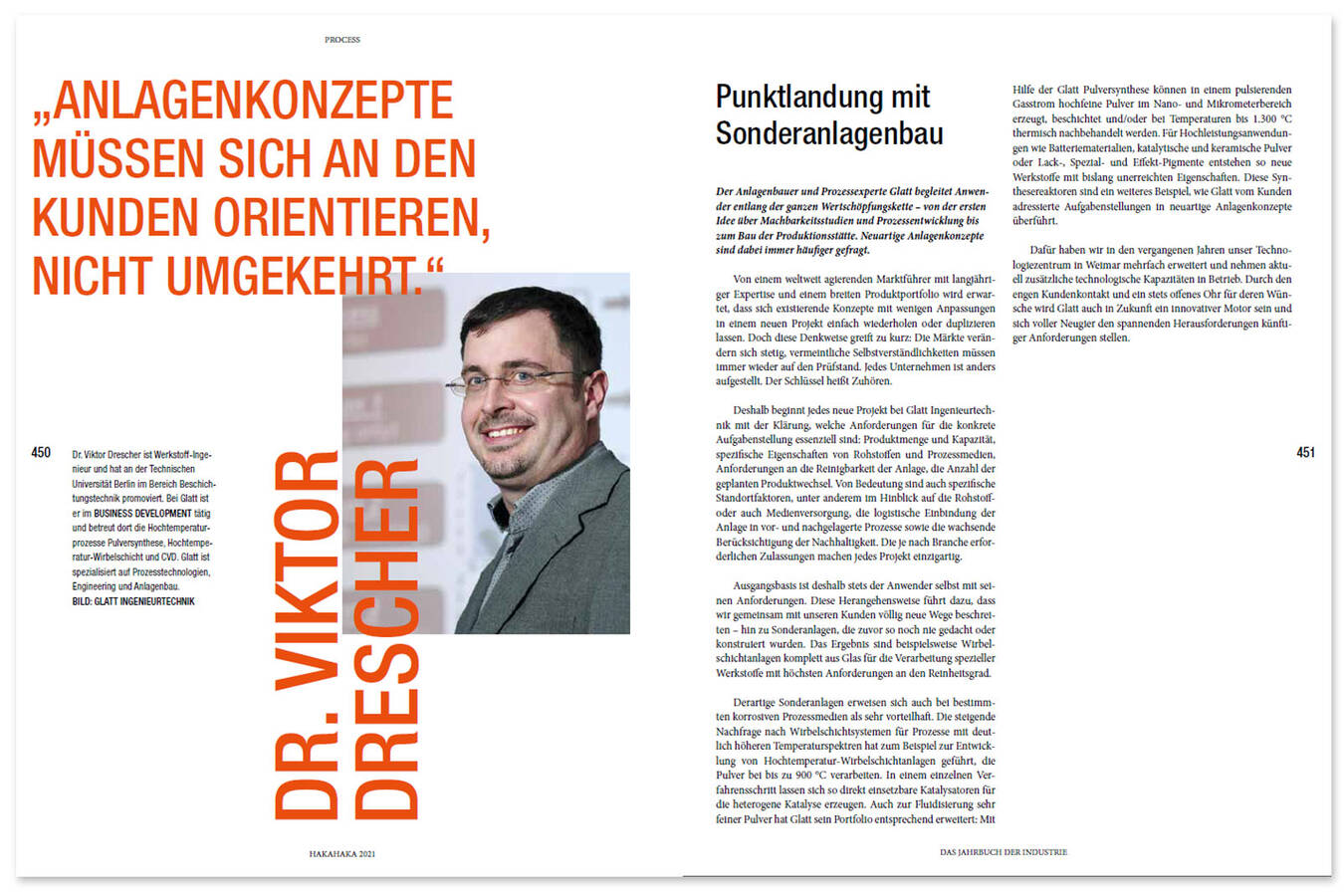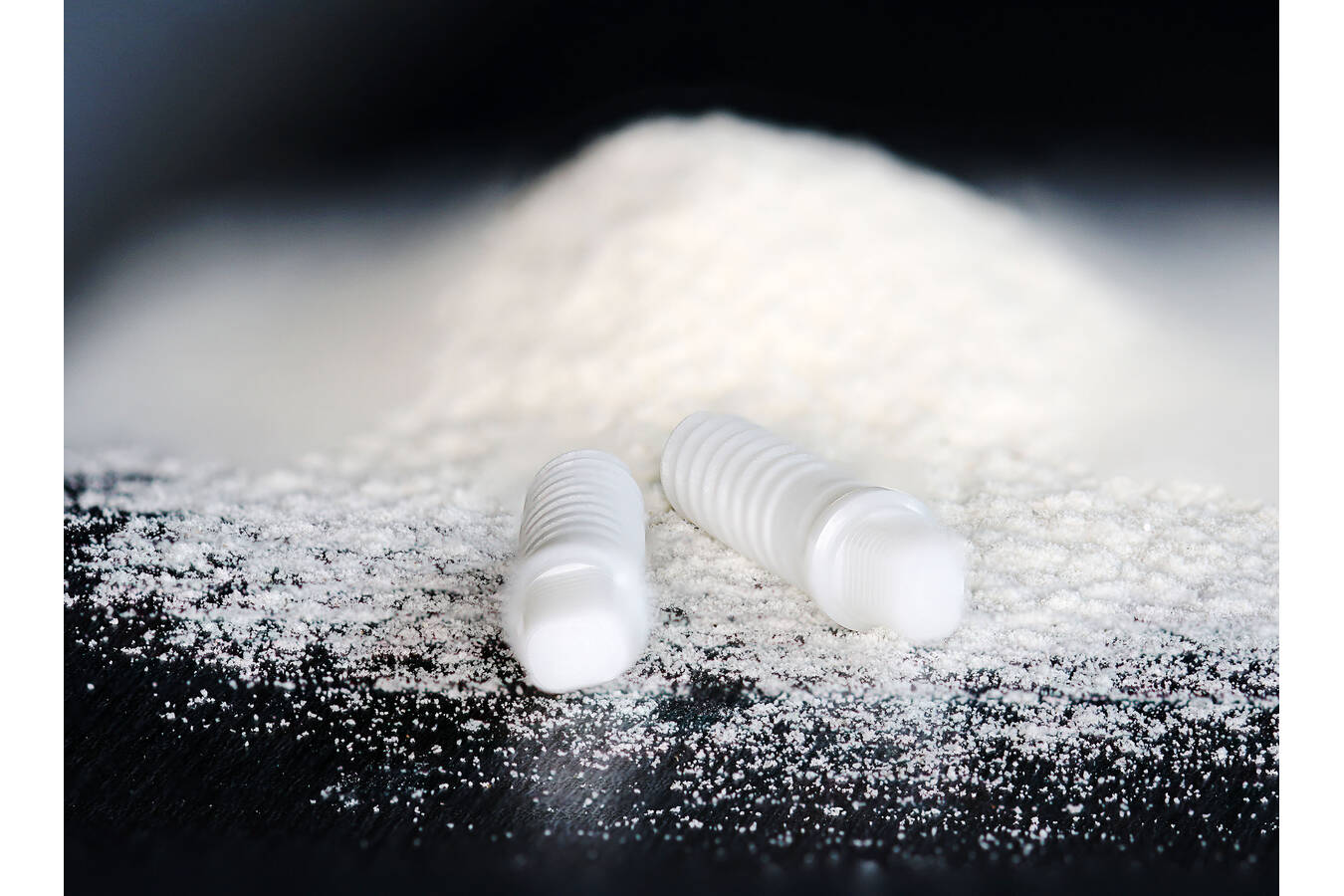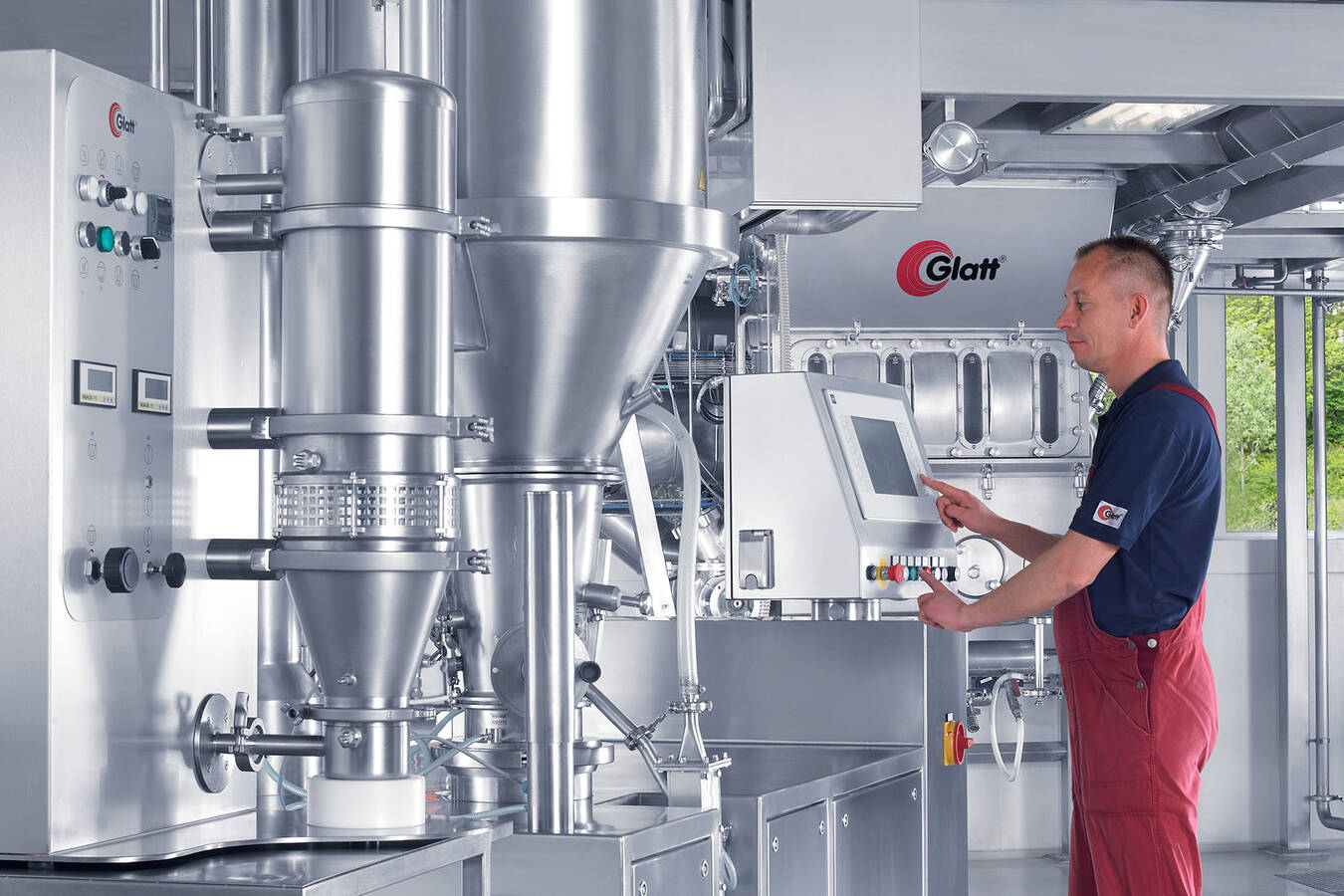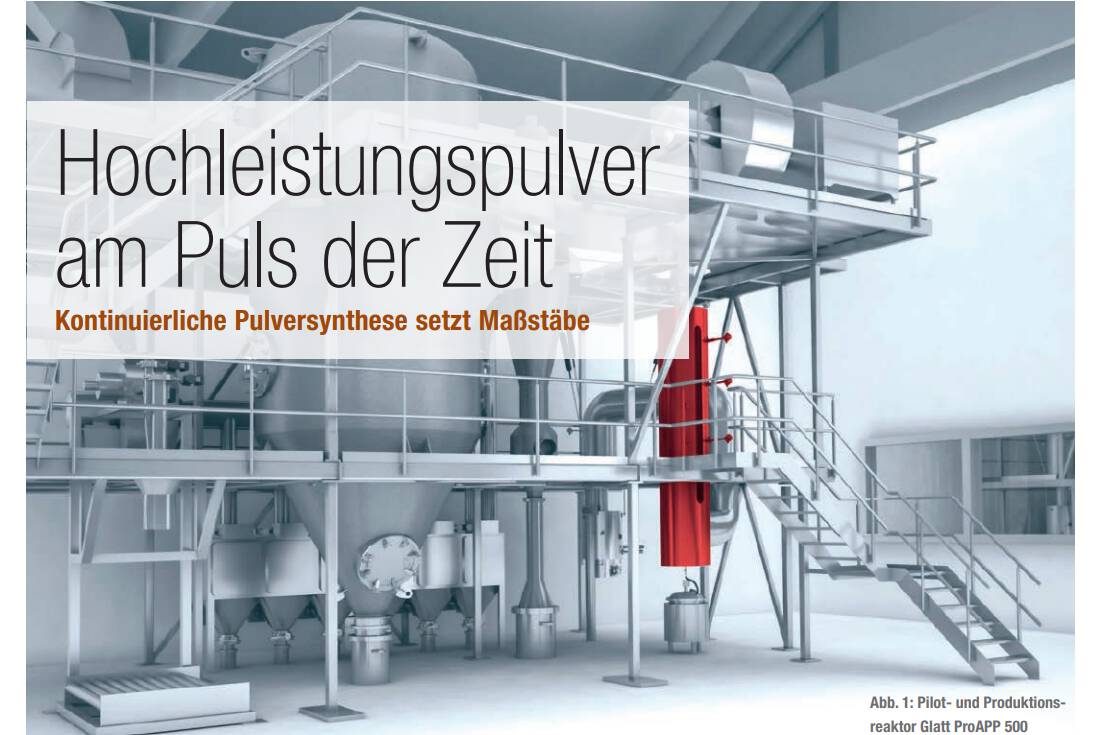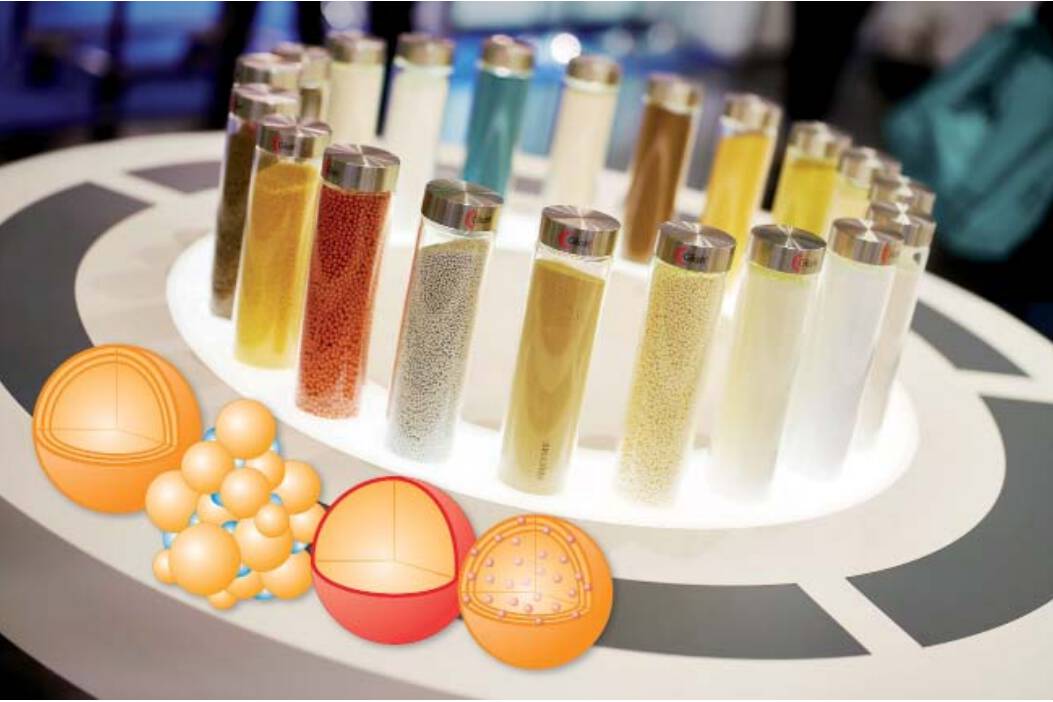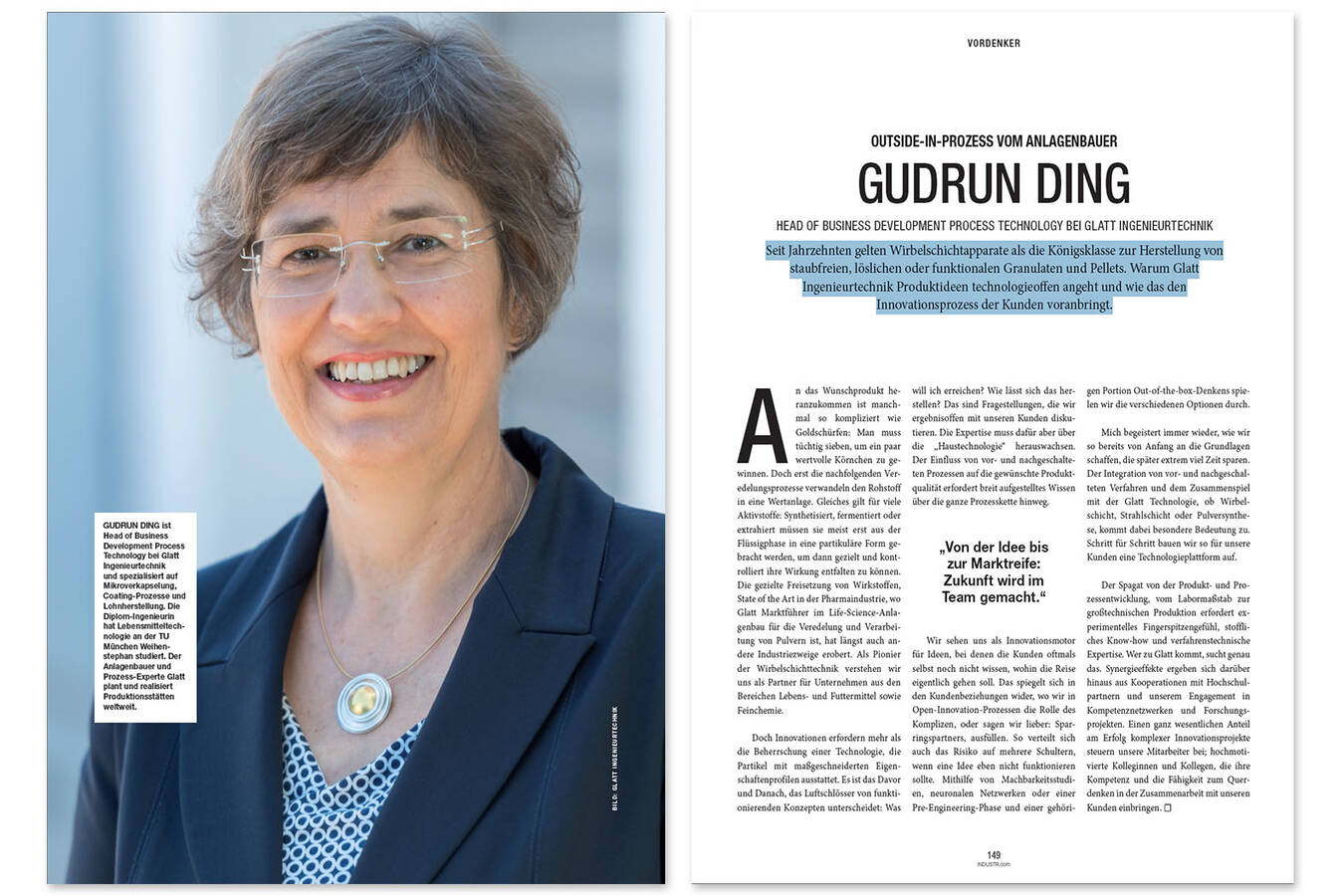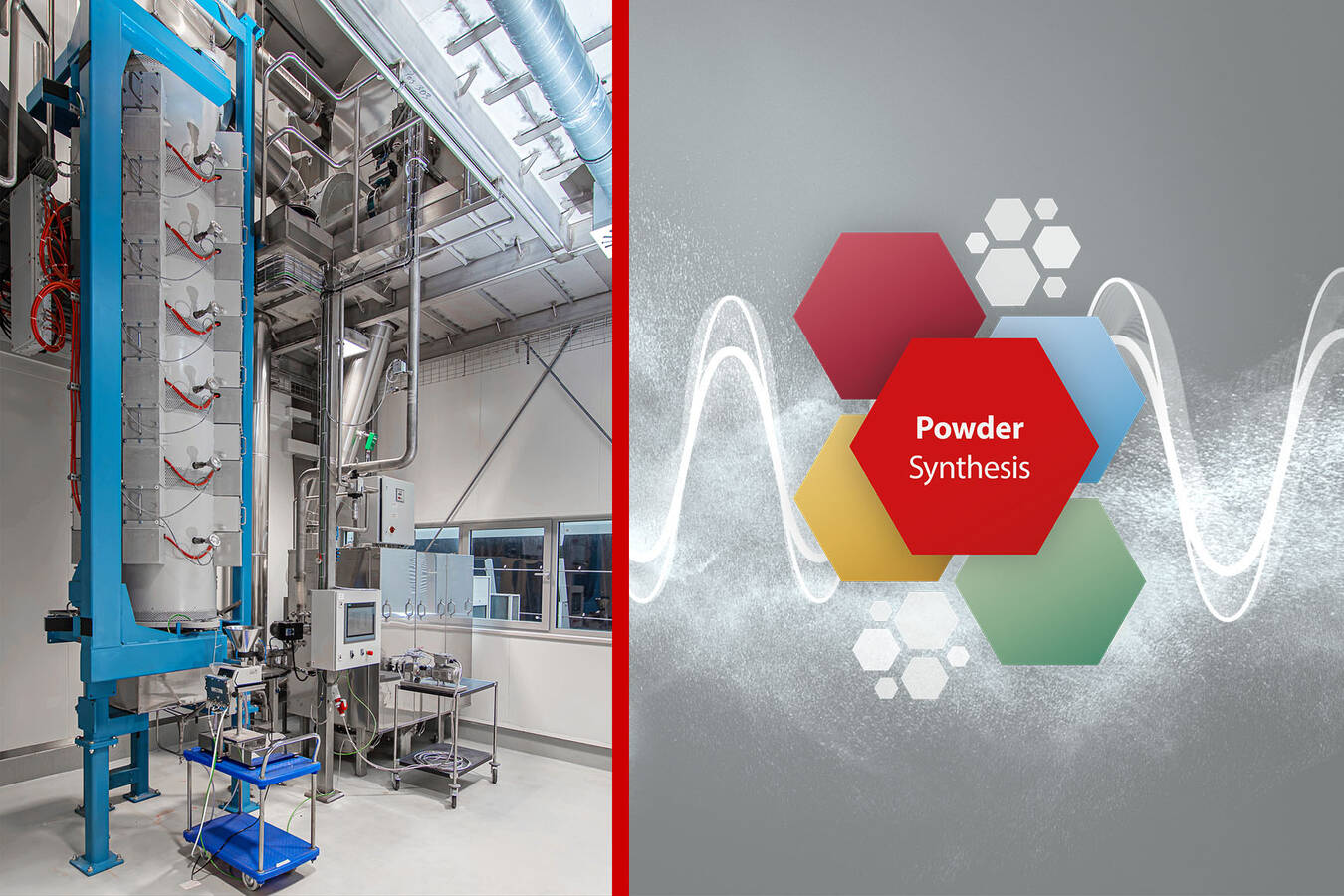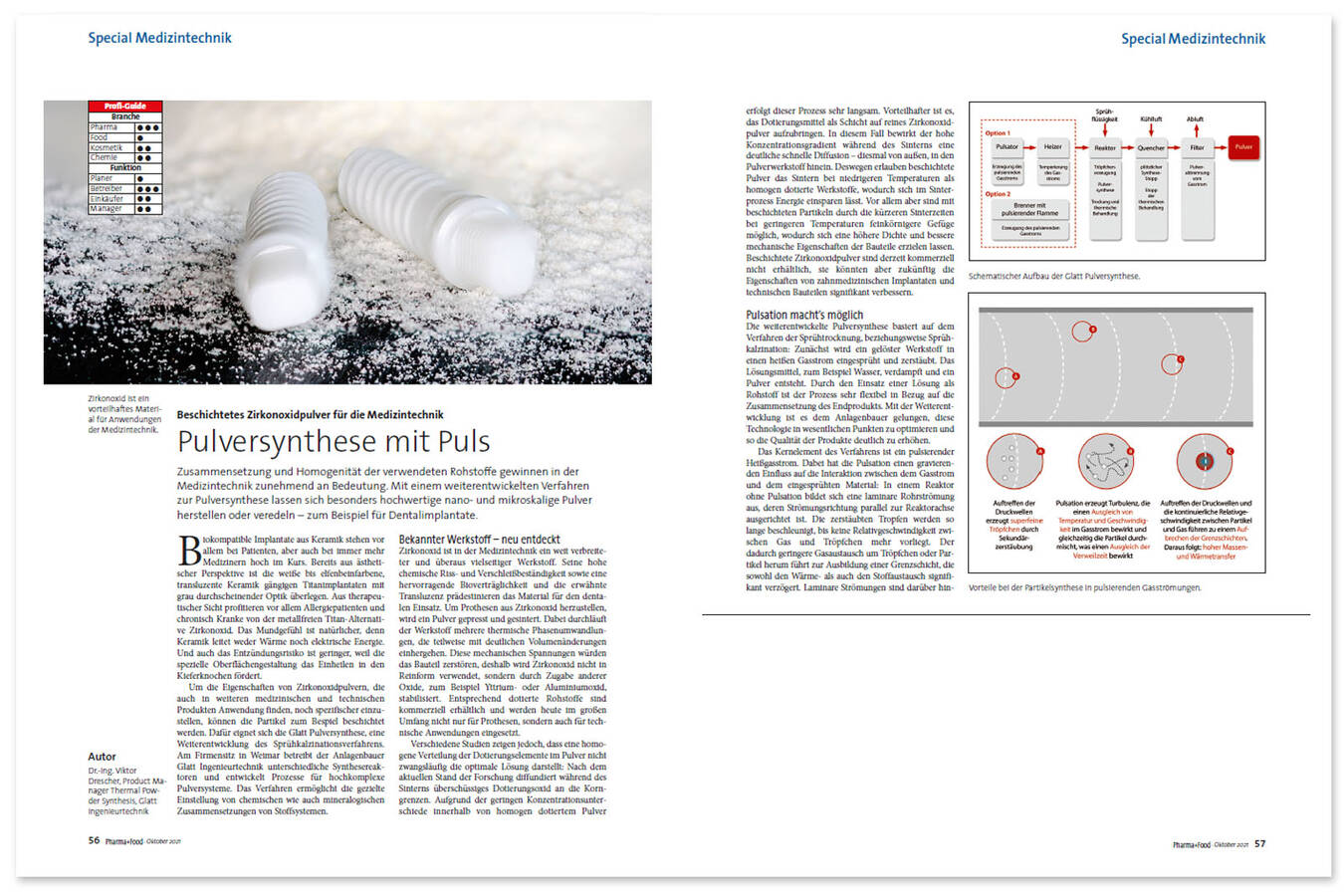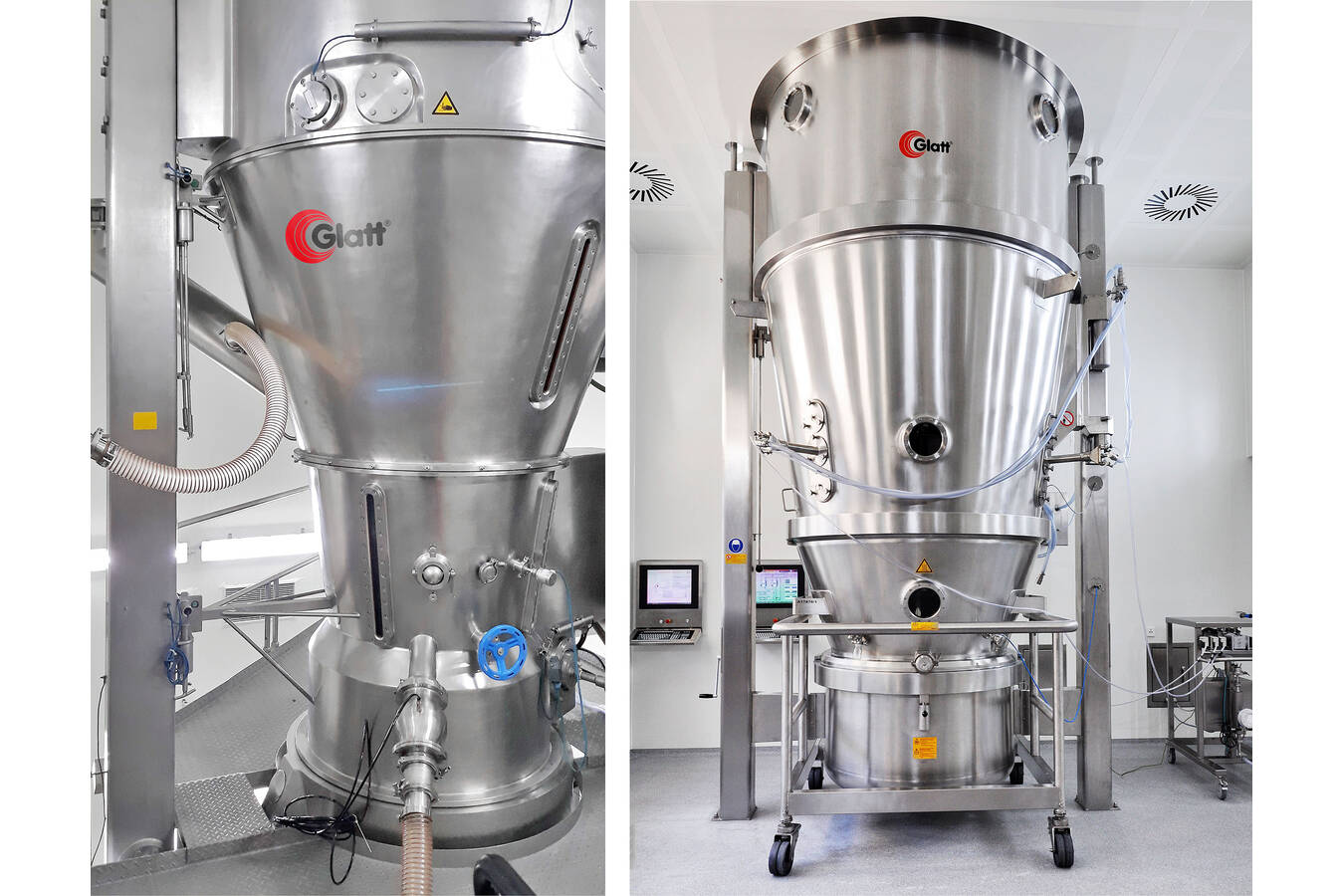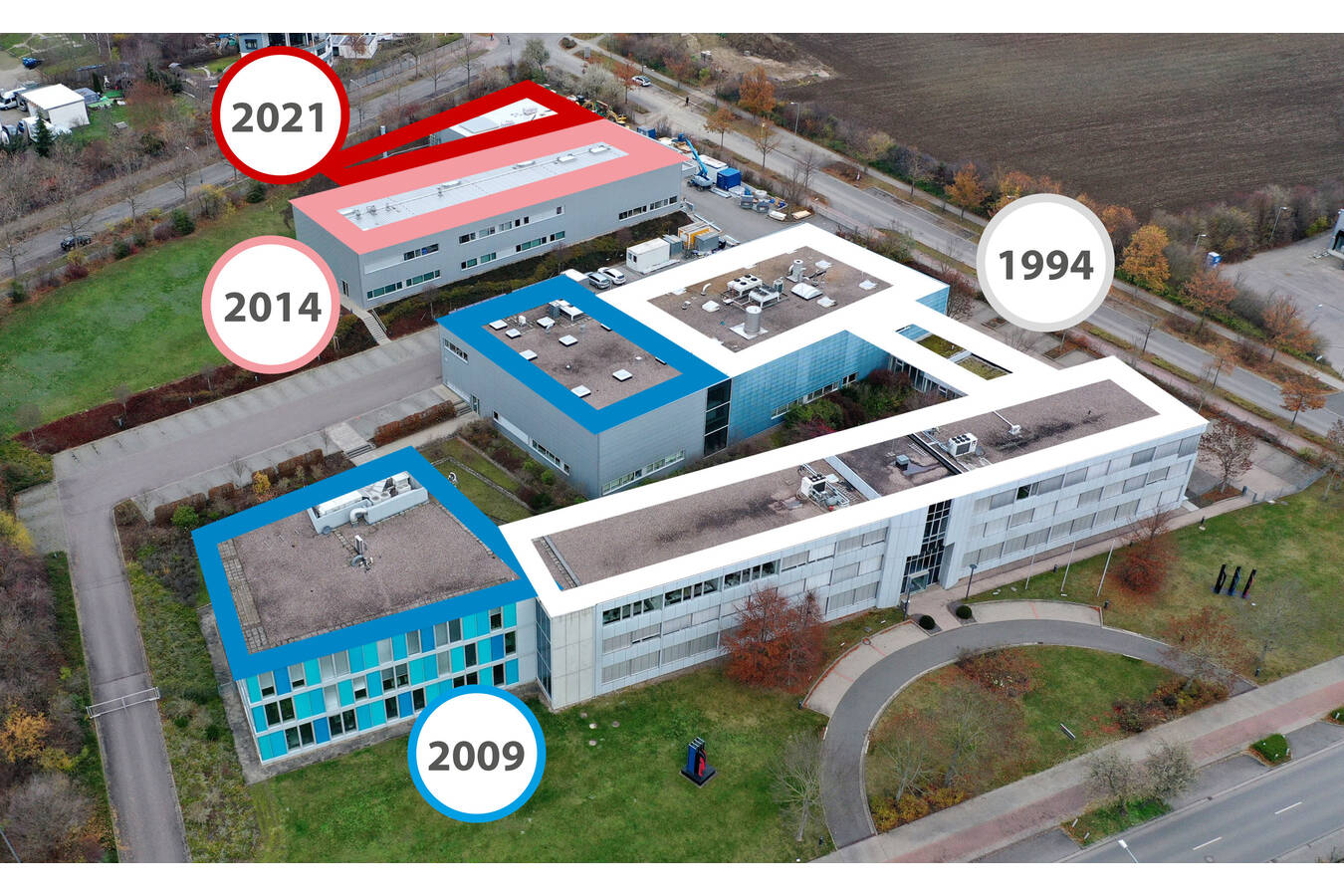Summary
Using the two sample substances, BSCF and doped/coated zirconium dioxide, it was possible to show that it’s inherently possible to produce complex ceramic substances on a laboratory to pilot scale. The powder synthesis technology used for this purpose offers additional possibilities beyond drying in a pulsating hot gas stream by adjusting the frequency and amplitude to influence particle size, structure and morphology.
The flexible development of ceramic raw materials makes it possible to create and test application-specific optimized materials with little effort. After successful testing, the technology can be scaled-up accordingly and the batch sizes adapted to meet actual demand.
Innovative ideas for materials and products
High-tech ceramics are currently used for various medical and technical applications; but, increasing competitive pressure is leading to growing demand for these special materials. As such, they are only commercially available from a limited number of manufacturers who have to produce batches of a specific size to operate economically. As a consequence, certain minimum purchase quantities are mandatory, at high prices, which often makes then difficult to obtain. This makes the development of innovative material and product ideas enormously difficult.
An alternative approach would be to produce lab-scale amounts of ceramic raw materials in-house or modify existing ones as appropriate. After successful testing, the manufacturing process must then be scaled-up to production volumes. Using two sample substances as examples, the advantages of such an approach are illustrated below.
Barium strontium cobalt iron oxide (BSCF) — Ba0,5Sr0,5Co0,8Fe0,2O3-δ — is a complex compound with a perovskite-like structure and is used as an ion conductor for oxygen membranes and as an electrocatalyst for hydrogen production [1,2]. Its use in fuel cells is also the subject of current research, but is often hampered by chemical instability. It has already been shown that by varying the iron/cobalt ratio, it is possible to adjust BSCF’s thermal resistance at low oxygen partial pressures [3] and increase its resistance to CO2 by decreasing the barium content [4]. As such, this demonstrates the potential to modify the property profile of complex materials to meet the needs of a particular application.
The second example that will be discussed in more detail is zirconium dioxide (ZrO2). It’s used for the large-scale production of thermal insulation layers, medical applications and commodity products such as kitchen knives. The material occurs in different crystalline structures; at room temperature and normal pressure, pure ZrO2 exists in a monoclinic phase. With increasing temperature, this changes to a tetragonal structure (1170 °C) and, from approx. 2370 °C, into a cubic crystal structure [5,6]. Owing to this phase transformation and the associated change in volume, it is not possible to manufacture components from pure zirconium dioxide.
The high-temperature phase can be stabilized by adding doping elements such as M2+, M3+ or M4+, or by charge compensation [7,8]. Even though numerous variations are already commercially available, the combination of different stabilizers offers further potential [9]. There is, however, another way to adapt its material properties: studies show that doping the powders before sintering is not necessarily the optimal solution. According to current research, excess doping elements diffuse to the grain boundaries during sintering. Owing to the low concentration differences, this process takes place very slowly [10]. It is better to apply doping elements as a layer on an undoped powder. During the subsequent sintering process, the high concentration gradient causes much faster diffusion — this time from the outside into the center of the grains. Therefore, coated powders allow lower sintering temperatures compared with homogeneously doped powders or the sintering time can be reduced. Because of the finer-grained microstructures, higher density components with better mechanical properties can be achieved [11].
Experimental procedure
A powder synthesis reactor from Glatt Ingenieurtechnik was used to produce and coat the powders (Fig. 1). The synthesis process is based on spray drying during which a solution is sprayed into a hot gas stream and dried. Using spray suspensions produces coatings in which the precursors are present in solution. Here, the surface properties of the core material can be influenced by changing the pH value so that bonds form between the core and the homogeneous coating. In addition to cost savings, this represents another clear advantage compared with alternative technologies such as physical or chemical vapor deposition.
>> Please follow the link an the right side to get the full article.
Results and discussion
The production of the powders was controlled using the reactor’s outlet temperature. Controlling the heating stages of the jacket heater was fully automated (although each stage can be controlled separately if required). In perspective, this allows defined temperature profiles to be displayed within the reaction tube. The pulsating process gas was preheated via a primary heating element.
>> Please follow the link an the right side to get the full article
Authors
Dr-Ing. Viktor Drescher, Dr Rer. Nat. Johannes Buchheim, both Glatt Ingeniertechnik GmbH, Weimar
Original publication
magazine ’Interceram’, issue 04/2022, Springer Fachmedien Wiesbaden GmbH
References
- Brett, D.J.L., Atkinson, A., Brandon, N.P., Skinner, S.J.: Intermediate temperature solid oxide fuel cells. Chem. Soc. Rev. 37 (2008) 1568–78.
- Li, X., He, L., Zhong, X., Zhang, J., Luo, S., Yi, W., Zhang, L., Hu, M., Tang, J., Zhou, X., Zhao, X. Xu, B.: Evaluation of A-Site Ba2+-Deficient BaCo0.4Fe0.4Zr0.1Y0.1O Oxides as Electrocatalysts for Efficient Hydrogen Evolution Reaction. Scanning 2018, Article ID 1341608.
- Ovenstone, J., Jung, J., White, J. S., Edwards, D. D., Misture, S. T.: Phase stability of BSCF in low oxygen partial pressures. Journal of Solid State Chemistry 181 (2008), [3] 576-586, ISSN 0022-4596.
- Yan, A., Yang, M., Hou, Z., Dong, Y., Cheng, M.: Investigation of Ba1−xSrxCo0.8Fe0.2O3−δ as cathodes for low-temperature solid oxide fuel cells both in the absence and presence of CO2. Journal of Power Sources 185 (2008), [1] 76-84.
- Goff, J. P., Hayes, W., Hull, S., Hutchings, M. T., Clausen, K. N.: Defect structure of yttria-stabilized zirconia and its influence on the ionic conductivity at elevated temperatures. Phys. Rev. B 59 (1999), 14202.
- Evans, A.G., Heuer, A. H.: REVIEW—Transformation Toughening in Ceramics: Martensitic Transformations in Crack-Tip Stress Fields. Journal of the American Ceramic Society, 63 (1980) 241-248.
- Garvie, R.C., Nicholson, P. S. (1972), Structure and Thermomechanical Properties of Partially Stabilized Zirconia in the CaO-ZrO2 System. Journal of the American Ceramic Society, 55 (1972) 152-157.
- Kelly, J. R., Denry, I.: Stabilized zirconia as a structural ceramic. An overview. Dent. Mater. 24 (2008), 289-298.
- Keller, E.K., Andreyeva, A.B: Effect of titanium dioxide on sintering and stabilization of ZrO2 in zirconium-alumina and spinel-zirconium mixtures. Refractories 2 (1961) 19–26.
- Kern, F.: Evidence of Phase Transitions and Their Role in the Transient Behavior of Mechanical Properties and Low Temperature Degradation of 3Y-TZP Made from Stabilizer-Coated Powder. Ceramics 2 (2019) 271–285.
- Burger, W., Richter, H. G., Piconi, C., Vatteroni, R., Cittadini, A., Boccalari, M.: New Y-TZP powders for medical grade zirconia. Journal of Materials Science: Materials in Medicine 8 (1997), 113–118.
- Vollath, D., Fischer, F.D., Hagelstein, M., Szabó, D. V.: Phases and phase transformations in nanocrystalline ZrO2. Journal of Nanoparticle Research 8 (2006) 1003–1016.
Acknowledgement
The BSCF trials took place as part of the “Novel Manufacturing Processes for Highly Permeable Oxygen Membranes and Development of an Innovative Membrane Connection Plate for Oxygen Generators- SaMBa” research project (FKZ: 2018 FE 9025).
The experiments on zirconium dioxide took place as part of the funded “PulsON – Development of an Efficient Production Technology for Highly Pure, Stoichiometrically and Morphologically Defined Nanopowders” project (FKZ: 2021 FE 9041).
The electrochemical characterization of the BSCF was conducted by Fraunhofer Institute for Ceramic Technologies and Systems IKTS in Hermsdorf/Germany.
The authors would like to express their sincere thanks to the state of Thuringia and the European Union for their support and help to conduct these experiments.
